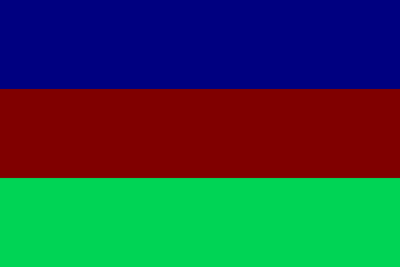
The flag of the Second Songhai Republic.

Africa in 2000.
In 1591, the Sultan of Morocco, seeing the wealth of the Songhai Empire, sent a small number of merceranies, armed with muskets, to invade the country. Because of the Songhai's massive numbers, they were able to take down the Moroccan mercs, at the cost of many soldiers.
Some of the many Songhai travelers had knowledge of how to use muskets, so they trained Songhai soldiers to use the guns left behind the dead mercs. By the time news of the invasion's failure reached the Moroccans, Songhai soldiers were outside the country's borders. The Songhai, knowing that Morocco had a militaristic advantage over them, wanted to make peace. Both countries agreed to a ceasefire, but were still relatively hostile to each other. Every once in a while, a lone soldier would cross the border accidentally and tensions would arise, but only for a short time.
After the Songhai's close brush with destruction, the Askia dynasty focused on militaristic development and territorial expansion to the West African Coast.
In 1863, the Askia Dynasty, which had ruled Songhai for so long, was deposed in a military coup d'etat, and the First Songhai Republic was established, modeled heavily after the First Hellenic Republic.
As the decades passed on, more and more European influence sweeped the country until finally, the French Colonial Empire reached the borders of Songhai. Even though the Songhai had a larger military than that of Sokoto, they were completely decimated by French forces, and were ultimately absorbed into French West Africa in 1913.
In February 1960, French West Africa was dissolved, and the Songhai became an independent state, at the cost of losing a small part of their original territory and being a part of the French Community until 1995.
As of 2000, the Second Songhai Republic has been a driving force in the African community, as a source of incredible economic development.
